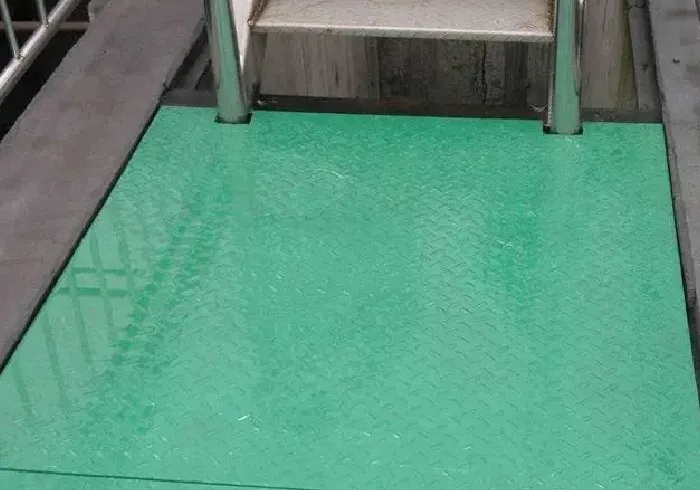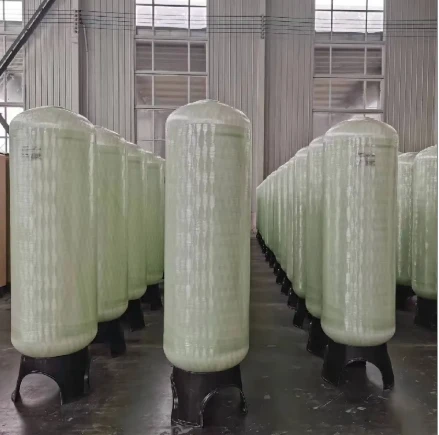loading...
- No. 9, Xingyuan South Street, Dongwaihuan Road, Zaoqiang County, Hengshui, Hebei, China
- admin@zjcomposites.com
- +86 15097380338
- Welcome to visit our website!
Premium Durable Fiberglass Water Tanks Best Prices
- Market Data: Growth & Adoption Rates of Fiberglass Water Tanks
- Engineering Superiority: Technical Advantages Explained
- Competitive Landscape: Manufacturer Comparison Table
- Customization Process: Design Flexibility & Specifications
- Installation Insights: Maintenance & Performance Guidelines
- Industry Applications: Real-World Implementation Scenarios
- Strategic Investment: Long-Term Value & ROI Analysis

(fiberglass water tank)
The Essential Guide to Fiberglass Water Tank Solutions
Global fiberglass water tank
market valuation reached $1.74 billion in 2023, expanding at 5.2% CAGR as industries shift from traditional materials. Municipal infrastructure projects now specify fiberglass in 63% of new tenders according to Water Technology Journal. This migration stems from lifecycle cost reductions averaging 40% over concrete or steel alternatives when accounting for installation, maintenance, and service longevity.
Engineering Superiority: Technical Advantages Explained
Fiberglass reinforced plastic (FRP) construction delivers unparalleled corrosion resistance, tested to withstand pH levels from 3 to 11 without degradation. Unlike steel tanks, they require no cathodic protection systems and eliminate rust contamination risks. Their seamless, monolithic design prevents leak paths at joints—a critical vulnerability in sectional tanks.
Structural integrity exceeds industry standards with compressive strength ratings of 30,000-40,000 psi, while material flexibility accommodates ground movement up to 2.75 inches without fracture. The non-porous surface maintains 99.98% bacterial growth inhibition according to NSF/ANSI 61 certification requirements. Thermal conductivity measures 0.05 W/m·K compared to steel's 50 W/m·K, significantly reducing heat transfer and condensation issues.
Competitive Product Analysis
| Specification | TankMaster Pro | AquaFiber Solutions | PolyGuard Industries |
|---|---|---|---|
| Pressure Rating | 25 PSI | 30 PSI | 22 PSI |
| Temperature Range | -50°F to 180°F | -30°F to 160°F | -40°F to 150°F |
| Standard Warranty | 20 years | 15 years | 10 years |
| Delivery Lead Time | 3-5 weeks | 2-4 weeks | 4-6 weeks |
Customization Process & Specifications
Engineering teams configure fiberglass water storage tanks using parametric design software with over 12 variables including vertical/horizontal orientation, diametrical ratios, and nozzle arrangements. Standard capacities range from 500 to 500,000 gallons with custom fabrication handling capacities exceeding 1 million gallons. Lamination processes incorporate specific resin matrices:
- Isophthalic polyester for standard potable water
- Vinyl ester solutions for chemical processing
- Fire-retardant additives meeting ASTM E-84 Class 1 certification
Accessory integration includes level monitoring systems, circulation manifolds, pressure vents, and seismic restraint configurations for zones with earthquake risk exceeding 0.3g PGA.
Installation & Operational Protocols
Lightweight construction (approximately 15% weight of equivalent steel tanks) enables placement without heavy lifting equipment. Foundation specifications require soil bearing capacity minimums of 1,500 PSF for tanks under 20,000 gallons capacity. Cured-in-place manufacturing processes ensure zero field welding or joint sealing operations.
Maintenance protocols include biannual visual inspections focusing on nozzle seals and structural supports. Cleaning requires non-abrasive methods approved for FRP surfaces. Service disruption avoidance strategies incorporate redundant tank systems with cascade switching controls during scheduled maintenance.
Industry Implementation Scenarios
Agricultural operations report 27% water conservation improvements using fiberglass reservoirs for drip irrigation due to reduced evaporation and elimination of seepage losses. A Malaysian municipality deployed 140 fiberglass water tanks averaging 80,000-gallon capacity across Penang Island, eliminating distribution interruptions during monsoon season pipeline damage.
Industrial applications include chemical processing facilities where tanks withstand acidic effluent streams at temperatures reaching 170°F without material degradation. Coastal desalination plants have adopted fiberglass extensively, with UAE installations demonstrating 100% corrosion resistance despite high-salinity atmospheric conditions over seven-year operational periods.
Fiberglass Water Tanks: Strategic Investment Analysis
Lifecycle cost assessments reveal 8-12 year ROI periods despite 15-20% higher initial investment compared to steel alternatives. The break-even analysis factors critical variables:
- Zero protective coating reapplications (average $12,000 savings every 5-7 years)
- Reduced insurance premiums (18-22% lower for non-corrosive structures)
- Extended service lifespan (50+ year verified operation vs 25-35 years for alternatives)
Utility companies report 97% water quality compliance over 15-year periods meeting stringent EPA regulations, avoiding treatment system retrofit expenses common with metallic tank systems. These operational efficiencies position fiberglass water tanks as infrastructure solutions with certified sustainability credentials.

(fiberglass water tank)
FAQS on fiberglass water tank
Q: What is a fiberglass water tank?
A: A fiberglass water tank is a durable container made from reinforced plastic (FRP) used to store potable or non-potable water. Its corrosion-resistant properties make it ideal for residential, agricultural, and industrial applications. These tanks are lightweight yet structurally strong.
Q: How much does a fiberglass water tank price range start?
A: Fiberglass water tank price typically begins around $500 for small-capacity residential units (500-1,000 gallons). Costs scale with size; industrial tanks (10,000+ gallons) often exceed $5,000. Customization and accessories also impact final pricing.
Q: Why choose fiberglass water storage tanks over steel alternatives?
A: Fiberglass water storage tanks resist rust, chemicals, and bacterial growth unlike steel tanks. They require minimal maintenance and won’t corrode, ensuring cleaner water storage. Their lightweight design simplifies installation and reduces foundation costs.
Q: Are fiberglass water tanks suitable for harsh climates?
A: Yes, fiberglass water tanks withstand extreme temperatures (-60°F to 190°F) and UV exposure without degradation. The non-conductive material prevents freeze-thaw damage, while seamless construction eliminates leak risks in storm-prone areas.
Q: What lifespan can I expect from a fiberglass water tank?
A: Properly maintained fiberglass water tanks last 30+ years due to their inert, non-corrosive nature. They resist scaling and algae buildup, preserving water quality and structural integrity. Warranties often cover 10-20 years, reflecting their reliability.
-
The Rise of FRP Profiles: Strong, Lightweight, and Built to LastNewsJul.14,2025
-
SMC Panel Tanks: A Modern Water Storage Solution for All EnvironmentsNewsJul.14,2025
-
GRP Grating: A Modern Solution for Safe and Durable Access SystemsNewsJul.14,2025
-
Galvanized Steel Water Tanks: Durable, Reliable, and Ready for UseNewsJul.14,2025
-
FRP Mini Mesh Grating: The Safer, Smarter Flooring SolutionNewsJul.14,2025
-
Exploring FRP Vessels: Durable Solutions for Modern Fluid HandlingNewsJul.14,2025
-
GRP Structures: The Future of Lightweight, High-Performance EngineeringNewsJun.20,2025
